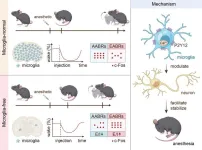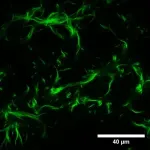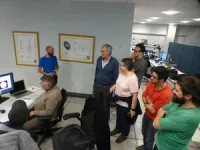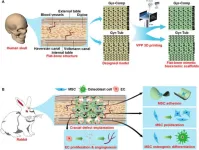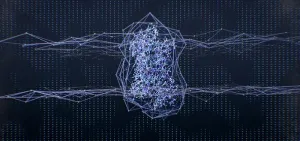(Press-News.org) Though it may be a surprise to the millions of people who undergo general anesthesia every year for medical procedures, the biological mechanism for how different anesthetics block consciousness is still not fully understood. However, researchers may be one step closer after uncovering the way small immune cells in the brain called microglia are impacted by general anesthesia.
The research was presented in a paper published in eLife on 22/Dec/2023.
“We found that microglia play an important role in regulating the body’s response to general anesthesia. Microglia are important immune cells in the central nervous system (CNS) that play critical roles in CNS function and dysfunction,” said Bo Peng, a professor in the Institute for Translational Brain Research at Fudan University in Shanghai, China. Previous microglia research has shown that the cells’ behavior changes while under anesthesia, but this study is the first that demonstrates how microglia regulate neuronal activity in a brain region-specific manner and play a key role in how anesthesia works.
The first glimpse of how microglia impact the effectiveness of anesthesia was observed unintentionally during other research and then confirmed through additional testing. Microglia depletion was induced in mice by blocking the colony-stimulating factor 1 receptor (CSF1R) signaling. When microglia were killed with a CSF1R inhibitor called PLX5622, there was a strong resistance to anesthesia. This resistance to anesthesia was observed with four different types of anesthesia with two different receptors and the observations were confirmed through electroencephalography (EEG) and electromyography (EMG) measurements.
Microglia also regulate brain network activity in a region-specific manner instead of a universal manner. Different parts of the brain regulate anesthesia induction and emergence. Induction is when the animal receiving general anesthesia goes from consciousness to unconsciousness, while emergence is when the patient goes from unconsciousness to consciousness. “We identified that microglia can facilitate and stabilize the response to general anesthesia via modulating the neuronal network in a brain region-specific manner. This is mediated by the microglial P2Y12 receptor and its downstream calcium signaling,” said Peng. Because of this brain region-specific regulation, microglial depletion not only delayed how long it took for anesthesia to work (delayed induction), but it also meant the anesthesia wore off faster (early emergence). “Our results also indicate that microglia sophisticatedly and diversely contribute to orchestrating the CNS function, rather than play an indiscriminate role of negative feedback control,” said Peng.
Looking ahead, researchers want to understand more about the microglial cells and how the P2Y12 receptor relates to neurological disorders. This receptor seems to be essential for a stable neuronal network and it is suppressed in multiple neurological disorders. Additionally, researchers will continue to learn how general anesthesia works. “Looking ahead, we plan to continue to dissect the mechanism of general anesthesia and study how microglia contribute to the central nervous system (CNS) function,” said Yousheng Shu, who is also a professor in the Institute of Translation Brain Research at Fudan University.
Other contributors include Yang He, Taohui Liu, Quansheng He, Wei Ke, Xiaoyu Li, Jinjin Du, Suixin Deng, Zhenfeng Shu, Jialin Wu, Baozhi Yang, Yuqing Wang, Ying Mao, Yanxia Rao, and Yousheng Shu.
The STI2030-Major Projects, National Natural Science Foundation of China, “Shuguang Program” supported by Shanghai Education Development Foundation and Shanghai Municipal Education Commission, Program of Shanghai Academic/Technology Research Leader, The Innovative Research Team of High-Level Local University in Shanghai, Shanghai Municipal Science and Technology Major Project, and ZJ Lab supported this research.
END
Microglia act as a “facilitator and stabilizer” for anesthesia
Critical role microglial cells play in general anesthesia
2023-12-22
ELSE PRESS RELEASES FROM THIS DATE:
3D-printed flat-bone-mimetic bioceramic scaffolds for cranial restoration
2023-12-22
The cranial bone in the human body performs very important functions, such as protecting the brain and enabling the passage of the cranial nerves that are essential to physiological functioning. Critical-sized cranial defects can disrupt both the physical and psychological well-being of patients. Restoration of critical-sized cranial defects by cranioplasty is challenging for reconstructive surgeons, who prefer to use autologous bone grafts. The acquisition of autologous bone requires additional surgeries concomitant with risks such as free flap loss, infection, deep venous thrombosis, and nerve injury. These limitations necessitate the development ...
TTUHSC's Reddy elected fellow by the National Academy of Inventors
2023-12-22
P. Hemachandra Reddy, Ph.D., a professor in the Texas Tech University Health Sciences Center (TTUHSC) School of Medicine’s Department of Internal Medicine who has researched healthy aging, dementia and other neurodegenerative diseases for more than 20 years, recently was named to the 2023 class of Fellows for the National Academy of Inventors (NAI).
The NAI is a member organization comprised of U.S. and international universities and governmental and nonprofit research institutes with more than 4,600 individual inventor members and fellows spanning more than 300 institutions worldwide. ...
Light colour is less important for the internal clock than originally thought
2023-12-22
Vision is a complex process. The visual perception of the environment is created by a combination of different wavelengths of light, which are decoded as colours and brightness in the brain. Photoreceptors in the retina first convert the light into electrical impulses: with sufficient light, the cones enable sharp, detailed, and coloured vision. Rods only contribute to vision in low light conditions allowing for different shades of grey to be distinguished but leaving vision much less precise. The electrical nerve impulses are finally transmitted to ganglion cells in the retina and then via the optic nerve to the visual cortex in the ...
Scientists develop ‘flying dragon’ robot to fight fires from a distance
2023-12-22
Imagine a flying dragon that doesn’t spout fire, but instead extinguishes it with blasts of water. Thanks to a team of Japanese researchers, this new kind of beast may soon be recruited to firefighter teams around the world, to help put out fires that are too dangerous for their human teammates to approach.
The blueprint of this novel firefighter robot, called the Dragon Firefighter, has now been published in Frontiers in Robotics and AI. And as it has been published as Open Science, roboticists around the world may freely ...
Sunday sales reign supreme and other takeaways from review of farmers market transactions
2023-12-21
CORNELL UNIVERSITY MEDIA RELATIONS OFFICE
FOR RELEASE: Dec. 21, 2023
Kaitlyn Serrao
607-882-1140
kms465@cornell.edu
ITHACA, N.Y. – Cornell researchers partnered with New York livestock farmers to analyze transactions at farmers markets, finding that sales were better on Sundays, early in the morning, and during certain months of the year. The study, which researchers believe is the first peer-reviewed analysis of customer-level transaction data at farmers markets, gives new insights into how farmers can make markets more profitable for them.
The researchers and farmers used point-of-sale devices that record sales ...
Palliative care is underused for patients with malignant urinary obstruction
2023-12-21
Less than half of patients with malignant ureteral obstruction (MUO) – a serious complication of advanced cancer, with a poor prognosis – receive palliative care (PC) for their condition, reports a paper in the January issue of Urology Practice®, an Official Journal of the American Urological Association (AUA). The journal is published in the Lippincott portfolio by Wolters Kluwer.
Hospice care can promote patient comfort while avoiding aggressive and invasive treatments for MUO patients nearing the end ...
JCEHP supplement aims to disrupt assumptions about continuing professional development
2023-12-21
December 7, 2023 —The Journal of Continuing Education in the Health Professions (JCEHP) has published a supplement, "Conceptual Advances in Continuing Professional Development in the Health Professions," in which scholars of continuing professional development (CPD) creatively examine prevailing assumptions and propose new theoretical frameworks and empirical insights. Publication of the supplemental issue is supported by the Society for Academic Continuing Medical Education (SACME). JCEHP, the official journal of the Alliance for Continuing Education in the Health Professions, ...
Researchers awarded $3 million to develop AI to better detect aggressive prostate cancer
2023-12-21
Researchers at the UCLA Health Jonsson Comprehensive Cancer Center have received a five-year, $3 million grant from the National Cancer Institute to identify novel cancer biomarkers and develop AI that can detect and predict aggressive prostate cancer to help avoid unnecessary treatments and their associated negative side effects.
Despite recent advancements, prostate cancer remains a common and serious health issue for men, and current methods of screening and risk assessment can often lead to overdiagnosis and overtreatment. About 90% of people diagnosed with prostate cancer receive treatment, even though ...
GPCR structure: Research reveals molecular origins of function for a key drug target
2023-12-21
Through an international collaboration, scientists at St. Jude Children’s Research Hospital leveraged data science, pharmacology and structural information to conduct an atomic-level investigation into how each amino acid in the receptor that binds adrenaline contributes to receptor activity in the presence of this natural ligand. They discovered precisely which amino acids control the key pharmacological properties of the ligand. The adrenaline receptor studied is a member of the G protein-coupled receptor (GPCR) family, and this family is the target of one-third of all Food and Drug Administration (FDA)-approved drugs. Thus, understanding how ...
Structures of Parkinson’s disease-linked proteins offer a framework for understanding how they work together
2023-12-21
Scientists at St. Jude Children’s Research Hospital revealed the complex structure of two Parkinson’s disease-related proteins, both of which are implicated in late-onset cases. Leucine-rich repeat kinase 2 (LRRK2) is a protein kinase that modifies other proteins in a process called phosphorylation; Rab29, a member of the Rab GTPase family that regulates cellular trafficking, modulates the activity of LRRK2. How Rab29 and LRRK2 work synergistically to cause Parkinson’s disease remains ...
LAST 30 PRESS RELEASES:
Numbers in our sights affect how we perceive space
SIMJ announces global collaborative book project in commemoration of its 75th anniversary
Air pollution exposure and birth weight
Obstructive sleep apnea risk and mental health conditions among older adults
How talking slows eye movements behind the wheel
The Ceramic Society of Japan’s Oxoate Ceramics Research Association launches new international book project
Heart-brain connection: international study reveals the role of the vagus nerve in keeping the heart young
Researchers identify Rb1 as a predictive biomarker for a new therapeutic strategy in some breast cancers
Survey reveals ethical gaps slowing AI adoption in pediatric surgery
Stimulant ADHD medications work differently than thought
AI overestimates how smart people are, according to HSE economists
HSE researchers create genome-wide map of quadruplexes
Scientists boost cell "powerhouses" to burn more calories
Automatic label checking: The missing step in making reliable medical AI
Low daily alcohol intake linked to 50% heightened mouth cancer risk in India
American Meteorological Society announces Rick Spinrad as 2026 President-Elect
Biomass-based carbon capture spotlighted in newly released global climate webinar recording
Illuminating invisible nano pollutants: advanced bioimaging tracks the full journey of emerging nanoscale contaminants in living systems
How does age affect recovery from spinal cord injury?
Novel AI tool offers prognosis for patients with head and neck cancer
Fathers’ microplastic exposure tied to their children’s metabolic problems
Research validates laboratory model for studying high-grade serous ovarian cancer
SIR 2026 delivers transformative breakthroughs in minimally invasive medicine to improve patient care
Stem Cell Reports most downloaded papers of 2025 highlight the breadth and impact of stem cell research
Oxford-led study estimates NHS spends around 3% of its primary and secondary care budget on the health impacts of heat and cold in England
A researcher’s long quest leads to a smart composite breakthrough
Urban wild bees act as “microbial sensors” of city health.
New study finds where you live affects recovery after a hip fracture
Forecasting the impact of fully automated vehicle adoption on US road traffic injuries
Alcohol-related hospitalizations from 2016 to 2022
[Press-News.org] Microglia act as a “facilitator and stabilizer” for anesthesiaCritical role microglial cells play in general anesthesia
